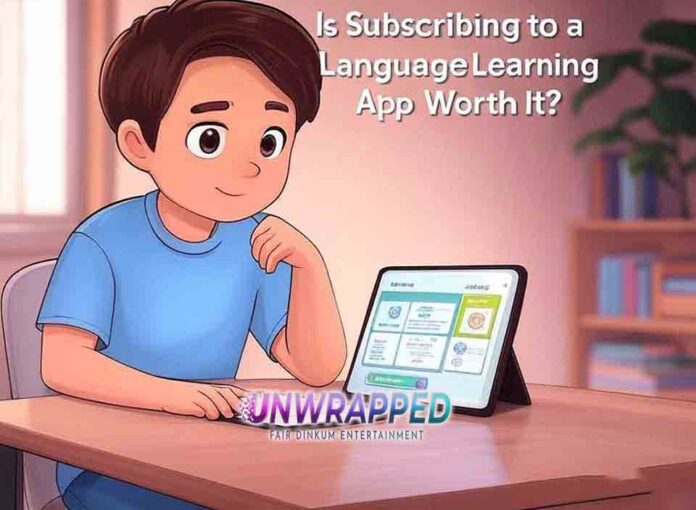In a world where globalization is the norm, learning a new language has never been more relevant. Whether it’s for travel, career advancement, or cultural enrichment, language learning is a valuable skill. But with the rise of language learning apps like Duolingo, Babbel, and Rosetta Stone, many are left wondering: is paying for these apps really worth it?
Let’s dive into the pros, cons, and value proposition of language learning apps to help you decide if subscribing is the right choice for you.
Why Use a Language Learning App?
Convenience and Accessibility
Language learning apps bring education to your fingertips. You can learn on your schedule, whether it’s during your morning commute or a lunch break. All you need is a smartphone and an internet connection.
Cost-Effectiveness
Traditional language classes or hiring a tutor can be costly. Apps often provide affordable subscription options, with some even offering free versions.
Variety of Features
From vocabulary flashcards to immersive speaking exercises, apps like Busuu and Pimsleur integrate gamified features to keep learners engaged and motivated.
Benefits of Subscribing to a Language Learning App
1. Ad-Free Experience
Free versions of many apps are supported by ads, which can be distracting. A subscription removes interruptions, allowing for smoother learning sessions.
2. Advanced Features
Paid versions often unlock additional tools, such as:
- Detailed grammar lessons.
- Speech recognition for improving pronunciation.
- Progress tracking and personalized lesson plans.
(Source: Duolingo Pricing and Features)
3. Offline Learning
Premium subscriptions typically allow offline access, perfect for learning on the go without worrying about data or Wi-Fi.
4. Access to Multiple Languages
For polyglots or those looking to learn more than one language, a single subscription often grants access to all languages offered by the app.
The Drawbacks of Subscribing
1. Not a Replacement for Immersion
While apps are excellent tools, they often lack the depth and nuance of real-life interaction with native speakers.
2. Repetitive Learning Styles
Some users may find the gamified approach repetitive or too simplistic for advanced language goals.
3. Subscription Costs
Though generally affordable, monthly fees (ranging from $7 to $15) can add up over time. For example, Rosetta Stone costs $11.99/month for a 12-month plan.
Comparing Popular Language Learning Apps
Duolingo
- Strengths: Free version available, gamified lessons, wide variety of languages.
- Weaknesses: Limited depth in grammar and speaking practice.
- Best For: Beginners and casual learners.
Babbel
- Strengths: Grammar-focused lessons, real-world dialogue practice.
- Weaknesses: Fewer language options compared to competitors.
- Best For: Learners seeking a structured approach.
Rosetta Stone
- Strengths: Immersive approach, excellent speech recognition technology.
- Weaknesses: Higher cost.
- Best For: Serious learners willing to invest.
(Source: Rosetta Stone Official Website)
Pimsleur
- Strengths: Audio-focused learning, ideal for verbal fluency.
- Weaknesses: Limited visual content.
- Best For: Learners who prefer listening and speaking.
Are There Free Alternatives?
While subscribing unlocks premium features, many apps offer free versions with limited access. Additionally, alternatives like YouTube language tutorials, free podcasts, and open-source resources (e.g., BBC Languages or Duolingo’s free plan) can supplement your learning journey.
Factors to Consider Before Subscribing
1. Your Language Goals
- Are you learning for casual conversations or professional fluency?
- Free versions may suffice for casual learners, while advanced goals often require premium access.
2. Budget
Evaluate if the cost aligns with your budget and how often you plan to use the app.
3. Learning Style
Apps that use gamification might appeal to visual learners, but those who prefer traditional methods might benefit from a tutor or language exchange.
Tips for Maximizing Your Subscription
- Set Clear Goals: Define what you want to achieve, such as mastering 500 new words or completing one lesson daily.
- Supplement with Other Tools: Combine the app with podcasts, YouTube videos, or in-person practice to enhance learning.
- Engage with Native Speakers: Apps like HelloTalk or Tandem offer opportunities to practice conversational skills.
- Track Your Progress: Use in-app analytics to monitor improvement and adjust your study plan.
Real-Life Success Stories
Case Study: Emily, the Traveler
- Challenge: Emily wanted to learn Spanish before a trip to South America.
- Solution: She subscribed to Babbel for three months, focusing on conversational phrases.
- Outcome: Emily reported feeling confident ordering food, asking for directions, and engaging in basic conversations.
Case Study: Raj, the Professional
- Challenge: Raj needed to learn German for a job relocation.
- Solution: He invested in Rosetta Stone, focusing on grammar and business vocabulary.
- Outcome: Within six months, Raj was comfortable holding meetings in German.
Conclusion: Is a Subscription Worth It?
Subscribing to a language learning app is worth it for individuals committed to achieving their language goals and willing to integrate the app into their daily routine. While free resources are available, the premium features often justify the cost by offering deeper insights, customization, and an ad-free experience.
Ultimately, the value lies in how effectively you use the app and whether it aligns with your learning style and goals.
Call to Action
Are you using a language learning app? Share your experiences in the comments below! Don’t forget to subscribe for more educational insights and tips.










